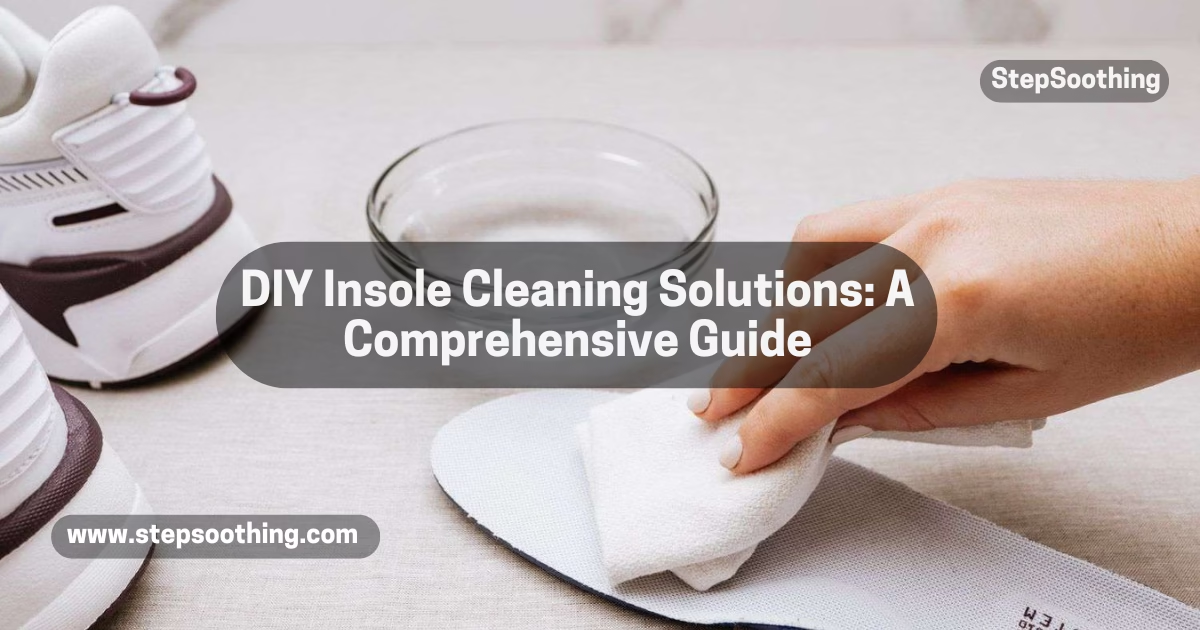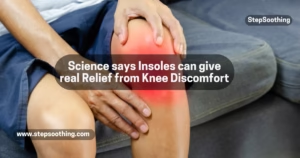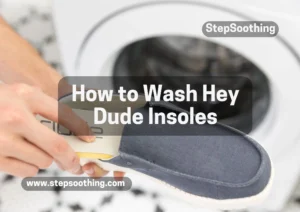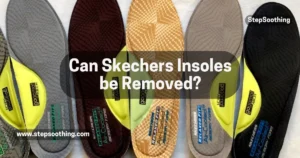Our shoe insoles are the unsung heroes of comfort. They cushion our steps, support our arches, and absorb the brunt of our daily activities. Yet, they often get overlooked when it comes to maintenance. Keeping your insoles clean is crucial for hygiene, comfort, and durability. In this detailed guide, we’ll explore how to clean gel insoles, care for orthotics, manage non-removable insoles, and more. Let’s dive in!
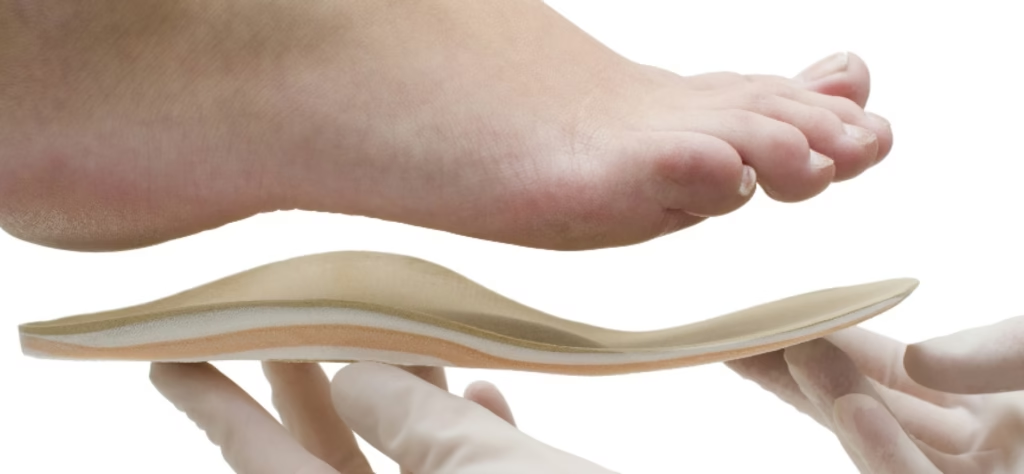
Why Insole Care Is Essential
Maintaining the lifespan of insoles requires regular cleaning and attention. Here’s why:
- Hygiene: Clean insoles prevent the buildup of bacteria, fungi, and odor.
- Comfort: Dirt and grime can reduce cushioning and support over time.
- Durability: Proper care ensures your insoles last longer, saving you money on replacements.
Whether it’s fabric, gel, leather, or foam, each material has unique cleaning needs. Let’s discuss how to tackle them all.
Types of Insoles and Their Care Needs
1. Foam Insoles
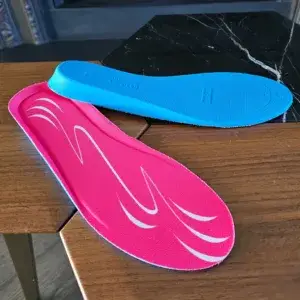
These lightweight, cushiony insoles are common in casual and athletic shoes. They’re easy to clean but can absorb moisture, so thorough drying is essential.
2. Gel Insoles
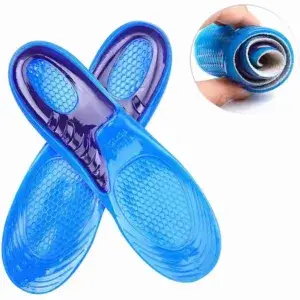
Gel insoles offer excellent shock absorption but are prone to odor buildup. Learning how to clean gel insoles effectively can keep them fresh and functional.
3. Leather Insoles
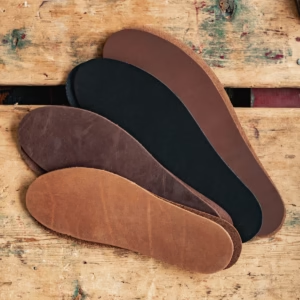
Durable and stylish, leather insoles require delicate care. Avoid excessive water exposure to prevent cracking or warping.
4. Orthotic Insoles

Designed for foot health, orthotics can be tricky to clean due to their specialized materials. Follow washing instructions for orthotic insoles carefully to maintain their structure and benefits.
5. Non-Removable Insoles
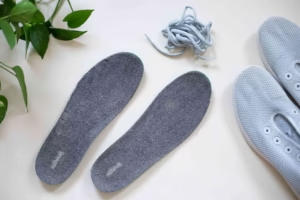
These insoles are fixed to the shoe, making cleaning challenging. Knowing how to clean non-removable insoles is crucial for maintaining hygiene without damaging the shoe.
DIY Cleaning Methods
1. Soap and Water
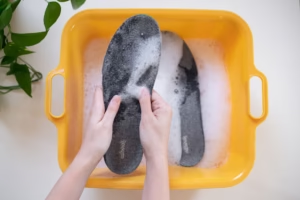
A gentle solution that works for most insoles except leather.
- What You Need: Mild soap, warm water, soft brush, and cloth.
- Steps:
- Create a soapy solution.
- Scrub the insoles lightly with a brush.
- Rinse with a damp cloth and let them air-dry.
2. Baking Soda
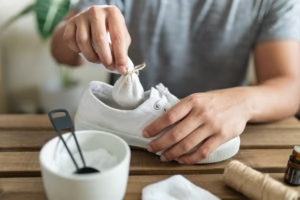
Perfect for deodorizing foam and fabric insoles.
- Sprinkle baking soda generously over the insoles.
- Let it sit overnight to absorb odors.
- Brush or shake off the residue.
3. Vinegar Solution
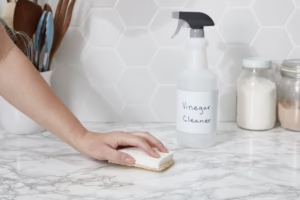
Great for removing stains and odors.
- Mix equal parts white vinegar and water.
- Wipe the insoles with a cloth soaked in the solution.
- Rinse with water and air-dry completely.
4. Rubbing Alcohol
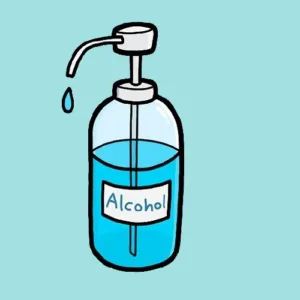
For quick disinfection, rubbing alcohol is your go-to.
- Mix with water in a spray bottle.
- Lightly mist or wipe the insoles.
- Let them dry before using them again.
5. Sunlight

A natural deodorizer and disinfectant.
- Place your insoles in direct sunlight for a few hours.
- Avoid prolonged exposure for leather insoles to prevent damage.
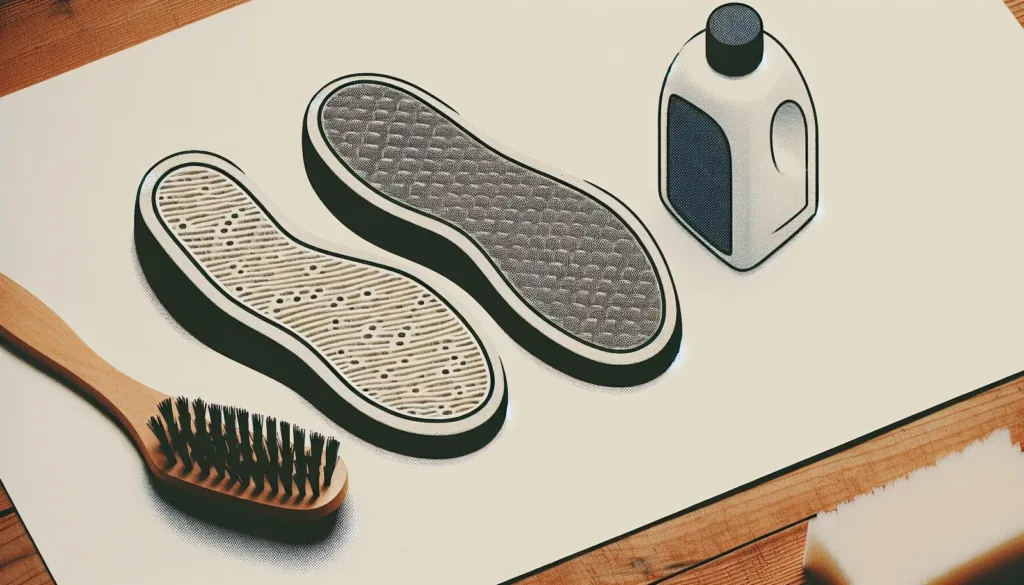
How to Clean Specific Types of Insoles
How to Clean Gel Insoles
Gel insoles can trap moisture and odors, so it’s important to clean them properly:
- Use a mild soap and a damp cloth to wipe the surface.
- Avoid submerging them in water, as it can damage the gel.
- Let them air-dry in a cool place.
Washing Instructions for Orthotic Insoles
Orthotics require a delicate touch:
- Use a soft brush with mild soap to gently clean the surface.
- Wipe with a damp cloth; avoid soaking to maintain their shape.
- Air-dry completely before reinserting them into your shoes.
How to Clean the Insoles of Sandals
Sandals often have fabric or leather insoles exposed to dirt and sweat:
- Wipe them with a damp cloth and mild soap.
- For stubborn stains, use a baking soda paste (baking soda + water).
- Let them air-dry in a shaded area.
How to Clean Non-Removable Insoles
Fixed insoles require a different approach:
- Mix a mild cleaning solution in a spray bottle.
- Spray the surface lightly and wipe with a cloth.
- Sprinkle baking soda for odor control and vacuum it off after a few hours.
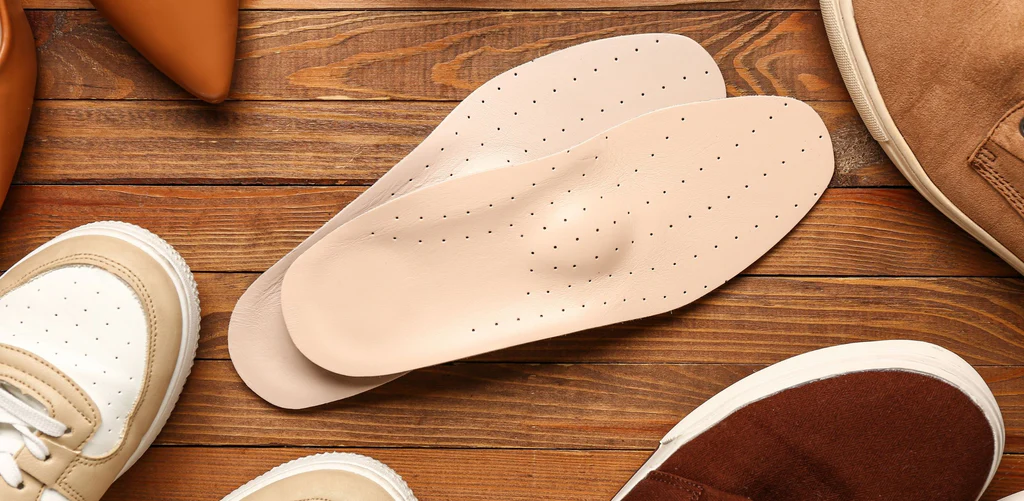
Maintaining Freshness and Longevity
Daily and Weekly Habits
- Wear clean, breathable socks to minimize odor.
- Air out your shoes after use, especially if they’re damp.
- Rotate shoes regularly to prevent overuse of one pair.
Storing Insoles Properly
Proper storage can prolong the life of your insoles:
- Keep them in a cool, dry place.
- Use silica gel packs or cedar inserts to absorb moisture.
- Avoid storing shoes in airtight containers, which can trap odors.
When to Replace Your Insoles
Wondering how often to replace shoe insoles? It depends on usage, but here are some general guidelines:
- Replace every 6–12 months for daily use.
- Signs it’s time for a replacement include:
- Flattened cushioning or loss of support.
- Persistent odors that cleaning can’t eliminate.
- Visible damage, such as cracks or tears.
Common Mistakes to Avoid
- Over-wetting insoles, which can lead to mold and odor.
- Using harsh chemicals that degrade the material.
- Skipping air-drying, resulting in trapped moisture.
- Ignoring signs of wear, leading to reduced foot support.
People Also Asked
1. Can I machine-wash insoles?
Most insoles should not be machine-washed, as it can damage the materials. Hand washing is the safest option.
2. How can I clean leather insoles?
Wipe them with a damp cloth and a mild soap solution. Avoid soaking or using abrasive cleaners.
3. What’s the best way to deodorize insoles?
Baking soda or vinegar solutions are effective. You can also use essential oils for a fresh scent.
4. How do I clean insoles without removing them from the shoe?
Spray a mild cleaning solution on the surface, wipe it clean, and sprinkle baking soda for odor control.
Conclusion
Regular insole care doesn’t just keep your shoes fresh—it protects your feet and extends the life of your footwear. From learning how to clean the insoles of sandals to mastering how to clean non removable insoles, these DIY methods are simple and effective.
Make insole care a part of your routine, and you’ll enjoy a more comfortable, hygienic, and long-lasting shoe experience. So, why wait? Grab your cleaning tools and give your insoles the attention they deserve!
For more stories, cleaning guides, or repair tips on Insoles, make sure to check out our ultimate blog. Catch you later, fam!
